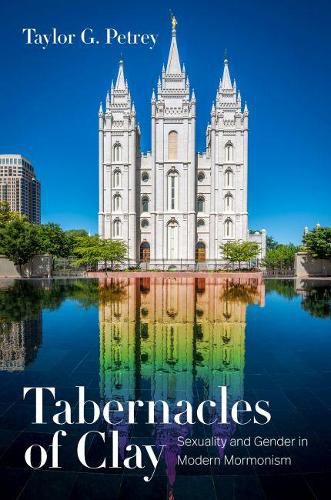Readings Newsletter
Become a Readings Member to make your shopping experience even easier.
Sign in or sign up for free!
You’re not far away from qualifying for FREE standard shipping within Australia
You’ve qualified for FREE standard shipping within Australia
The cart is loading…






Taylor G. Petrey’s trenchant history takes a landmark step forward in documenting and theorizing about Latter-day Saints (LDS) teachings on gender, sexual difference, and marriage. Drawing on deep archival research, Petrey situates LDS doctrines in gender theory and American religious history since World War II. His challenging conclusion is that Mormonism is conflicted between ontologies of gender essentialism and gender fluidity, illustrating a broader tension in the history of sexuality in modernity itself.
As Petrey details, LDS leaders have embraced the idea of fixed identities representing a natural and divine order, but their teachings also acknowledge that sexual difference is persistently contingent and unstable. While queer theorists have built an ethics and politics based on celebrating such sexual fluidity, LDS leaders view it as a source of anxiety and a tool for the shaping of a heterosexual social order. Through public preaching and teaching, the deployment of psychological approaches to cure homosexuality, and political activism against equal rights for women and same-sex marriage, Mormon leaders hoped to manage sexuality and faith for those who have strayed from heteronormativity.
$9.00 standard shipping within Australia
FREE standard shipping within Australia for orders over $100.00
Express & International shipping calculated at checkout
Taylor G. Petrey’s trenchant history takes a landmark step forward in documenting and theorizing about Latter-day Saints (LDS) teachings on gender, sexual difference, and marriage. Drawing on deep archival research, Petrey situates LDS doctrines in gender theory and American religious history since World War II. His challenging conclusion is that Mormonism is conflicted between ontologies of gender essentialism and gender fluidity, illustrating a broader tension in the history of sexuality in modernity itself.
As Petrey details, LDS leaders have embraced the idea of fixed identities representing a natural and divine order, but their teachings also acknowledge that sexual difference is persistently contingent and unstable. While queer theorists have built an ethics and politics based on celebrating such sexual fluidity, LDS leaders view it as a source of anxiety and a tool for the shaping of a heterosexual social order. Through public preaching and teaching, the deployment of psychological approaches to cure homosexuality, and political activism against equal rights for women and same-sex marriage, Mormon leaders hoped to manage sexuality and faith for those who have strayed from heteronormativity.